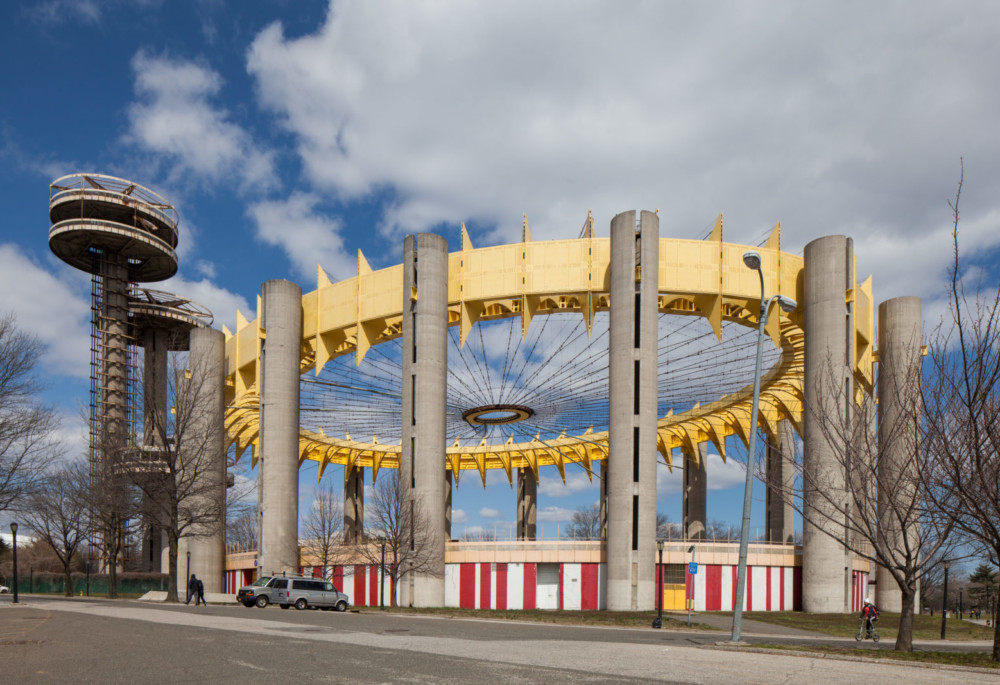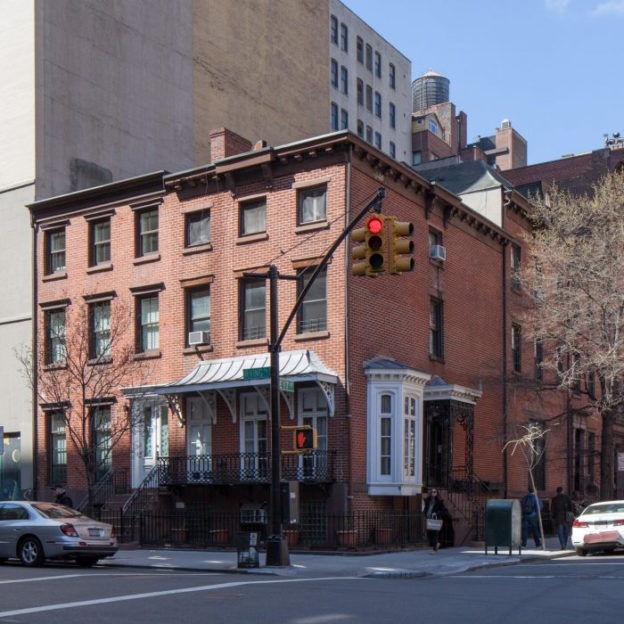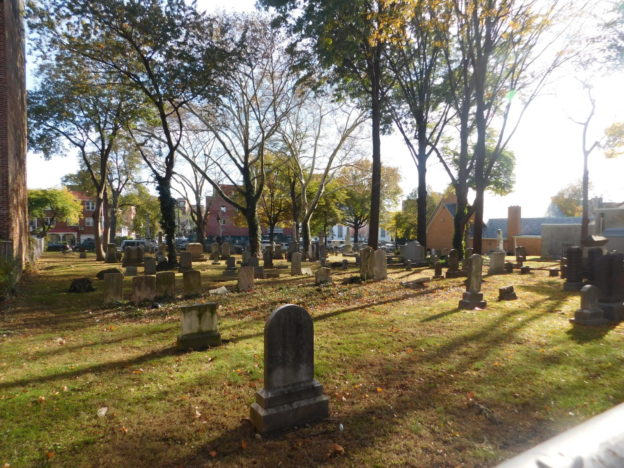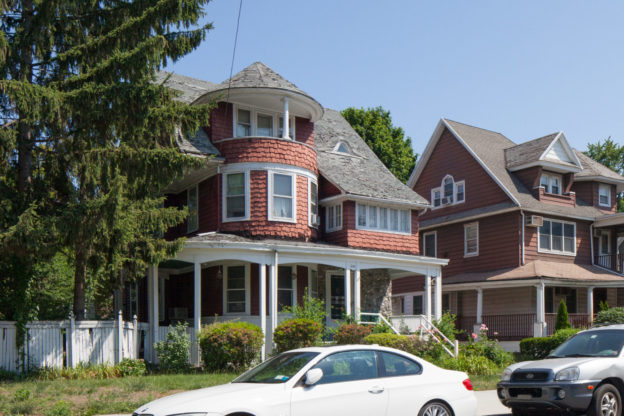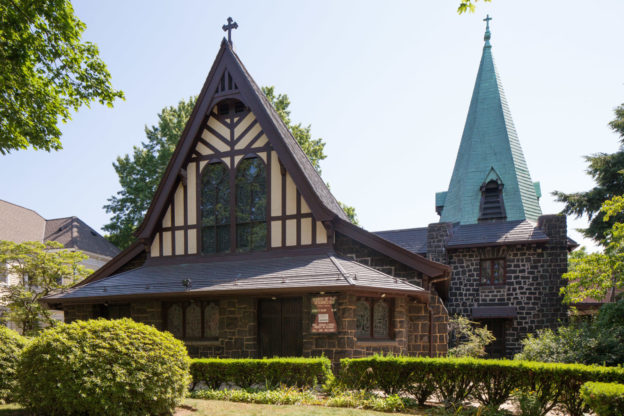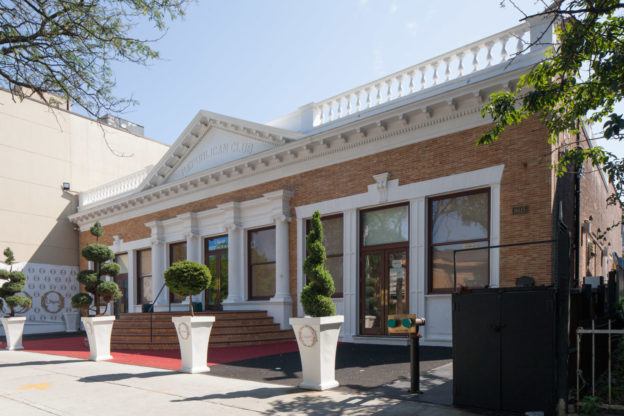New York City Pavilion / Queens Museum, Aymar Embury II, 1939
New York State Pavilion, Philip Johnson and Richard Foster, 1962-64
Unisphere, Gilmore D. Clarke, 1963- 64
World’s Fair Carousel, William Mangels, 1964
The city’s second largest park was originally a meadow and wetland, but in 1907 industrialist Michael Degnon acquired much of the property hoping to woo the federal government to fund a port on Flushing Bay. He began filling it in with residential coal ash through contracts with the NYC Department of Sanitation and the Brooklyn Ash Removal Company. The port plan never materialized and the area remained for several decades the wasteland immortalized as the “valley of ashes” in F. Scott Fitzgerald’s The Great Gatsby (1925). In 1935 the area was officially selected as the location for the 1939 World’s Fair. Landscaping began in 1936 to the designs of Gilmore D. Clarke and Michael Rapuano and the fair opened on April 30, 1939. The only relic surviving in situ from the 1939 fair is the New York City Building, which later hosted the United Nations General Assembly from 1946-50 (while its permanent home was being built in Manhattan), was renovated as the New York City Pavilion for the 1964 World’s Fair and is now the Queens Museum. For the 1964 World’s Fair, Clarke and Rapuano updated their original landscape, whose centerpiece was the Unisphere, a 140-foottall globe set above a giant reflecting pool and fountain. Other extant sites include the New York State Pavilion and the World’s Fair Carousel. The State Pavilion was meant to showcase the state’s cutting-edge art, architecture and technology, and consisted of three components: the open-air Tent of Tomorrow; three Astro-View observation towers; and the Theaterama (now the Queens Theatre in the Park). Long neglected, the Tent has been repainted, while its terrazzo floor—an oversized replica of a Texaco roadmap of New York State—has been mothballed, hopefully awaiting restoration. The carousel combined elements from two previous rides, Feltman’s Carousel (1903) and the Stubbman Carousel (1908), both carved by Marcus Illoins on Coney Island. It was moved to its current location in 1968. Ownership of the site was transferred from the World’s Fair Corporation back to the city in 1967, permanently establishing Flushing Meadows-Corona Park.The Unisphere is an Individual Landmark; the NY State Pavilion and the World’s Fair Carousel are listed on the State and National Register of Historic Places.
84-37 113th Street c. 1900
84-11 112th Street c. 1900
The full range of Richmond Hill’s architectural styles is on display in the triangle-shaped wedge of residential blocks between Myrtle Avenue and the former South Side Railroad line (elevated above Bessemer and Babbage Streets since 1924). Most of neighborhood’s houses date to the period of Academic Eclecticism in architecture. Many use highly irregular massing—often including corner turrets, projecting bay windows and complex rooflines—enabled by new technologies and building techniques. The use of applied ornament also reflects the increasing industrialization of the building trades. As factories began mass production of architectural components such as doors, windows, siding and decorative detailing, domestic architectural styles became much more flamboyant. Nominally based on medieval European precedents, these “Victorian” architectural styles were in fact a loose interpretation of both medieval and Classical models, and architects frequently mixed and matched elements in highly individualized components. One of the most individual houses is the unusual Japanese-inspired design at 84-37 113th Street. Some of Richmond Hill’s houses reflect post-Victorian architectural styles, which were more formal and rigorous in their use of historic precedents. Perhaps the most popular of these styles was the Colonial Revival, which favored symmetrical house forms more clearly. An impressive example of this style is found at 84-11 112th Street.
The blocks near this intersection feature some of the oldest houses in Richmond Hill, erected at the very beginning of the neighborhood’s building boom. In 1884, Albon Platt Man himself commissioned five houses to jump-start the neighborhood’s development. Of these, 116-03 85th Avenue is likely the only surviving example. At least two other houses in the area were built by the early 1890s, at 116-12 85th Avenue and 85-14 117th Street (which was listed on an 1891 map as the residence of architect Henry E. Haugaard). The area also contains a noteworthy cluster of Shingle Style residences, including the similar turreted examples at 117-03 85th Avenue and 84-48 118th Street, both constructed around 1900 by local architect-builders Wade & Cullingford.
85-09 118th Street
Nathaniel W. Vickers
1904
National Register of Historic Places
The Church of the Resurrection, founded in the late 1860s as a mission of Grace Episcopal Church of Jamaica, was the first religious organization established in Richmond Hill. It built its first home on this site in 1874 when the surrounding suburban neighborhood was still mostly made up of unoccupied lots. A series of subsequent alterations culminated in 1904 with the construction of an entirely new stone and half-timbered structure around the existing church building, resulting in its present form and appearance. Like many Episcopal churches, the design takes its inspiration from the medieval parish churches of England, with its picturesque rooflines, asymmetrical massing and rustic materials palette of quarry stone, stucco and half-timbering. One of its most noted congregants was Jacob Riis, who donated the stained glass triptych in the north wall of the church in memory of his wife Elizabeth in 1905. The rectory building, constructed in 1888 on the corner lot directly to the north, has been known informally as “Riis House,” although there is no record that the family ever lived there. The Church of the Resurrection is still an active congregation and its building was placed on the State and National Registers of Historic Places in 2003.
86-15 Lefferts Boulevard
Henry E. Haugaard
1908
NYC Individual Landmark
While local architect Haugaard was known primarily for his residential designs, this building shows his equal fluency with civic architecture. Its Classical style ornament and orange brick façade nicely complement the nearby library. Like other social clubs, whether Democratic or Republican, the Richmond Hill Republican Club (RHRC) served as a locus of community activity for the neighborhood, organizing and hosting public lectures, rallies, parades, picnics, dances and dinners. The main floor contained meeting rooms and a billiards parlor, while the basement housed a bowling alley (a large auditorium was planned for the second floor but was never constructed). Beyond its role as a local social institution, the RHRC participated in national politics by inviting prominent political figures to speak; notable appearances were made by the likes of Theodore Roosevelt, Harry Truman, Richard Nixon, Gerald Ford and Ronald Reagan. The RHRC closed in the 1980s, and the building has since been adaptively reused as a catering hall and event space.
118-14 Hillside Avenue
Tuthill & Higgins
1905
The Richmond Hill branch was one of six public libraries in Queens funded by industrialist and philanthropist Andrew Carnegie. It traces its origins to a lending library established c. 1899 by local resident Ella J. Flanders (prominent local resident Jacob Riis served as an early trustee). Unlike earlier libraries, which typically occupied space in other buildings, the Carnegie branches were designed to stand out. Most, including the Richmond Hill branch, employ a classical architectural vocabulary; in the outer boroughs, they were also typically sited on larger lots, and were usually one-story, freestanding buildings with horizontally oriented floor plans. In 1929, a sympathetically designed addition to the Richmond Hill Branch was constructed in the rear to house the Children’s Library. The main reading room features a Works Progress Administration-sponsored mural titled “The Story of Richmond Hill,” painted in 1936-37 by artist Philip Evergood, which contrasts the pastoral pleasures of suburban Queens on the left against a bleak industrial urban landscape on the right.
117-09 Hillside Avenue
R. Thomas Short
1926-29
Richmond Hill once had a number of movie theaters, most located in small storefronts along Jamaica Avenue. By far the largest was the RKO Keith’s Theatre, which in comparison to others was a true motion picture palace. It originally featured both Vaudeville acts and movies on its roster of entertainment. Designed in the neo-Classical Revival style, the building’s prominent street façade is clad in buff brick with white terra cotta trim and features the original marquee. Architect R. Thomas Short was known for his theater designs, among them The Grand in Astoria, and The Rialto, The Shubert and The Midwood in Brooklyn. The L-shaped RKO Keith’s theater maintains its impressive architectural presence on Hillside Avenue; the large auditorium block is visible from Bessemer Street, and on its interior, the theater’s lobby, lounge and auditorium spaces remain largely intact.
116-23 Jamaica Avenue
1910
Jamaica Avenue is considered the oldest continually used road on Long Island, originally opened in 1703 as the King’s Highway and later privatized under the Jamaica & Brooklyn Plank Road Company. In the early 20th century, around the same time as the blocks north were filling with stately houses, the avenue began its transformation into an important local commercial corridor (eventually given a huge boost with the arrival of the elevated train in 1917). One of the largest and most ornate commercial structures in the neighborhood, the Richmond was also the first poured-concrete structure on Jamaica Avenue. Its solid Renaissance-inspired design includes a modillioned cornice broken by two arched parapets, one of which is inscribed with the building’s name and date of construction.
